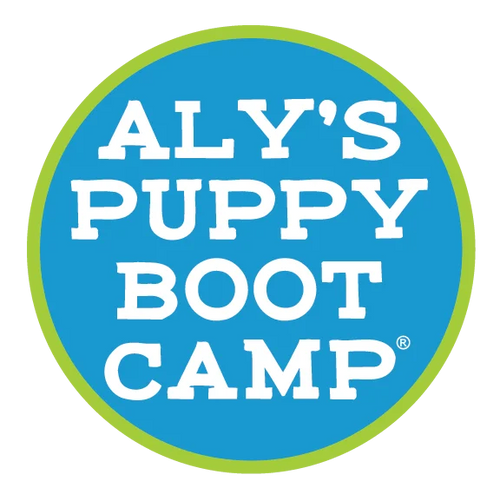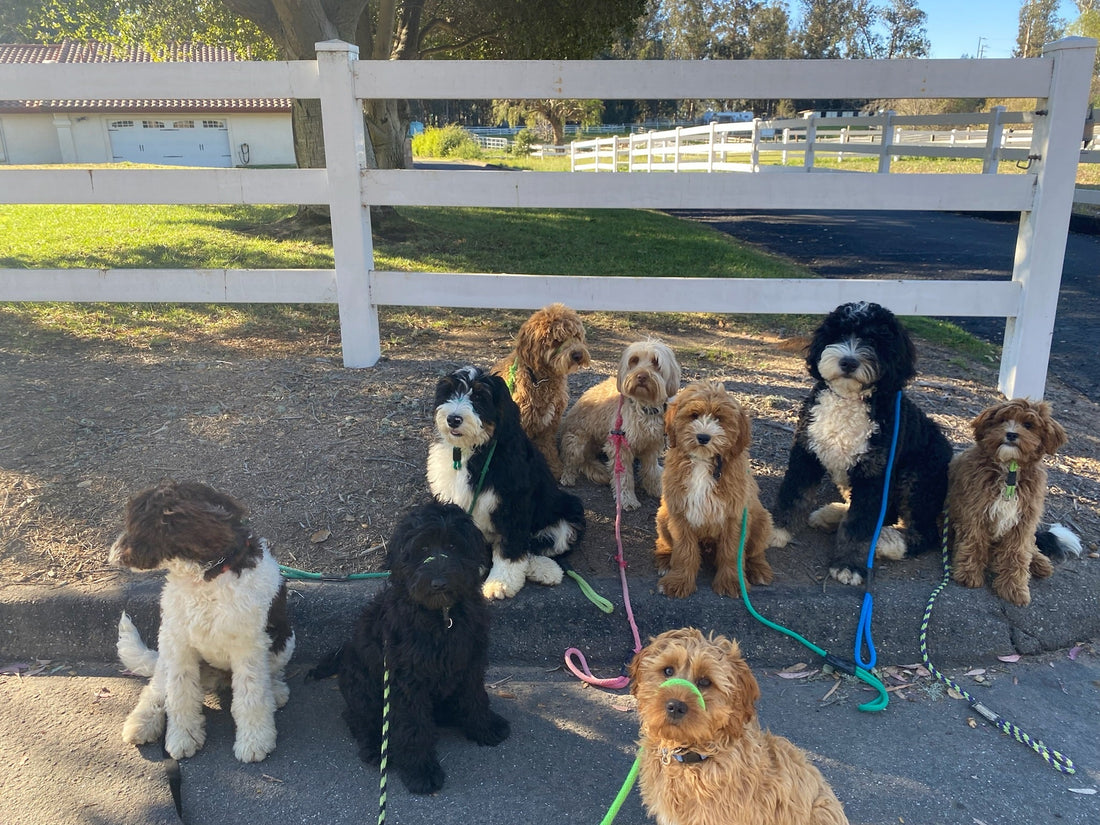Don't Be A Tool Fool
Tools can get a bad rap, through no fault of their own.
There is an old saying in dog training land that says, “It’s not the tool…it’s the fool”.
Tools have no value in and of themselves, it is the hands that use them that determine their effectiveness and humanness. I’ve seen harnesses that pinched and restrained proper shoulder movement. I’ve seen flat collars that caused damage when pulled hard enough for long enough. I’ve seen electronic collars be so soft and subtle and artistic in use that they mimicked a whistle and a whisper.
What is a tool?
The definition of a tool is: “A device or implement, especially one held in the hand, used to carry out a particular function” I am a balanced trainer that uses a variety of methods and tools that are appropriate for you and your dog. I have trained with masters from around the world in these tools, and I am extremely competent in a variety of tools.
Here is a fun video I recorded a few weeks ago for the Right vs Wrong Tools.
- Here is a list of my favorite tools for dogs:
- Herm Sprenger pinch collar
- Starmark collar
- Electronic collar
- Chain slip collar
- Head halter
- Martingale collar
- and my Learning Leash with Learning Loop
- Treats.
ALL of these tools can be fabulous in the right hands and with the right conditioning to a dog.
Also, get the best brand of any product you choose. A Ford Pinto is a car and it drives. A Mercedes is a car and it drives. But there is a difference in the quality, workmanship and price of each car, right!!! You generally do get what you pay for.
What You need to Know about Tools for your dog
There is no right or wrong tool….
COMMON QUESTIONS I hear:
“When can I stop using this tool?” OR “Do I have to use this tool forever?”
My answer to these questions is usually, Why wouldn’t you want to use that tool? You can walk without shoes, but you usually wear them, right! Why? The answer is, they help protect you and get you from point a to b safely. You can eat soup without a spoon, but it’s neater and quicker using a spoon, right! I know you are getting the picture here, right!!. The better question should be:
Can a tool fade? The answer is absolutely yes! But how fast it can fade depends a lot upon how consistent you are in working with your dog in manners, respect of space issues and basic obedience both inside and outside the house. The more you deal with issues across the board on a consistent basis, tools can and do fade.
“I would never use that tool! It’s so harsh.”
My answer to this comment is that the person making it doesn’t have the refined skills or adequate knowledge about the tool and/or a dog that is required to use that particular tool effectively and softly. It really is that simple.
If you have a great sense of timing when to release pressure and when to apply pressure, crystal clear body communication with the dog, a fantastic read of the dog, all at the same time, that means a world of tools is available to you!
Before you can use any tool well, you have to be able to hold your leash correctly!
Aly’s TOP TIPS for Leash-Handling Basics
Before we begin with what tool to use, we need to understand a few leash-handling basics. First, use just your thumb. Slip your thumb through the loop at the end of the leash then fold the leash in your hand butterfly style. Close your hand. Do not wrap the leash around your hand, wrist, or arm. For maximum control and safety, make sure the leash is coming out of the bottom of your hand (near your pinky finger) when you are finished folding the leash like a butterfly. There should also be enough slack between your hand and your dog so your dog is not uncomfortable. You want enough slack on your line that when you stop walking, your dog can lay down. Generally that is about 20-24”. When your hands are in a walking position (low by your pockets) your leash is short enough to control your dog, but loose enough that there is a slight bend to your leash. I’ve heard it described as your leash smiles. Hold your arms down at your sides, not bent upwards or even above your head. If you stop to talk to someone or give the dog a break, either put a foot on the leash or hold it with your hands folded together with your hands and leash braced against your belly button so the dog doesn’t pull you around.
Before we start pulling on a leash willy-nilly, let’s first learn about positions and the best way to apply leash pressure. One of my dog-training heroes, Chad Mackin, shared this description with me, and I’ve found it the easiest way to explain it to my clients: Picture your dog standing on your left side. Now picture that your dog’s body has the position of the face of a clock. Your dog’s head is 12 o’clock, his tail is 6, his left side is 9, and his right side is 3.
Before you ever begin applying leash pressure, you need to have your hand at the correct distance from your dog’s body in order to have appropriate leverage. Place your guiding hand (left hand if your dog is on your left) so it is 5–8 inches up the leash from your dog’s collar. People often have their hands too far up the leash and lose leverage. When you are ready to apply direct pressure on the leash, you need to apply that pressure in the most effective direction.
Teach your Dog to Sit
For example, getting your dog to sit, apply gentle pressure straight up above the dog’s head into the 12 o’clock position. The millisecond he sits, immediately release the pressure. The release of pressure is praise for the dog so he can understand that he made the right choice. Want to turn left? Apply gentle pressure in the 9 o’clock direction. Want to turn right? Apply gentle pressure in the 3 o’clock direction. Tie your leash to a doorknob and practice moving your hands up and down your leash so you can smoothly, quickly, and effectively get your hands to their proper position on the leash, about 5–8 inches from the doorknob. Yes, you do have to learn how to take up slack, let slack out, and use both your hands while doing it. You have to be able to quickly and efficiently get your hands up and down your leash in a smooth way. Practice!
Do I have favorite tools? Sure I do! But what works for me may not work for you. What I can do with a piece of twine and a piece of string cheese, you might not be able to achieve. Timing, soft touch, clarity of body language, accurately reading the dog in the moment...all comes into play when determining what tool is best for your and your dog.
My Favorite Tools for Common Situations
Pulling & Strong Dogs
I recommend my Learning Leash with Learning Loop. Condition the tool correctly by having a treat handy and the minute you put the loop over the nose, give the dog a treat. Then, keep your hands down low and go. Should the dog fight the sensation of this new tool, be sure to apply steady pressure to get the dog to sit and then immediately release all pressure. Wait. Go again. I have a fantastic training video in our Aly’s Insider Club on how to correctly condition this tool.
Dogs that Ignore you, Dogs that Jump and Dogs that love to Smell
I recommend the Starmark collar or a Herm Sprenger collar. Hinged tools like these are very good because they distribute pressure evenly around the neck. These tools need to be fitted higher up on the neck of the dog (right under their ears-ish area). When the collar is fitted correctly there is about 1 ½ inches to 2 inches between the two rings or two sides of the collar. If the collar hangs low and looks like a necklace, it is not fitted correctly. With these tools, gently apply steady pressure until the millisecond you get what you are asking for, then immediately release all pressure.
Puppies
I always start a puppy with my Learning Leash (no learning loop). It operates as a standard Slip-Lead. When you put the the slip on, you want to have about 3 fingers worth of play between the lock and the neck of the dog, so that the leash can actually ‘slip’.
My final tips–no matter what tool you choose, have it correctly fitted and correctly conditioned. Crazy hands make for crazy reactions…always. So no crazy hands people! Seek professional guidance on this! We can help you too in our one on one visits which we do via Zoom or Facetime with Aly or Luke!



